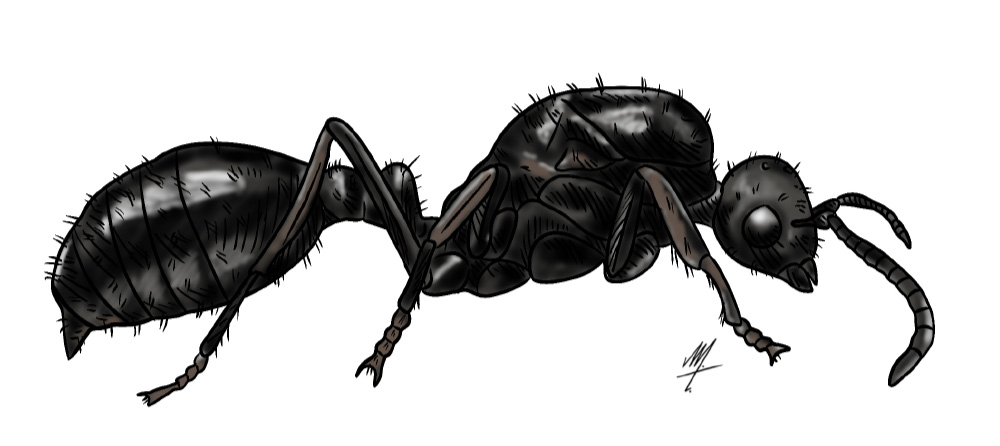Adventures in the World of Little Black Ants
Imagine a world where tiny black ants are the stars. That’s the world of the Little Black Ant! These ants are super small but have huge adventures every day. They might be walking right under our feet, and we don’t even notice. Come along as we explore the exciting life of the Little Black Ant and all the cool things they do.
Meet the Little Black Ant
The Little Black Ant, known to scientists as Monomorium minimum, is really tiny, usually only about 1.5 to 2 mm long. They’re jet black, which makes them look like tiny moving dots on the ground. What’s really cool about these ants is how they work together in big groups, showing us that teamwork can achieve great things, no matter how small you are.
Home Is Where the Colony Is
Little Black Ants make their homes in all kinds of places. They love building their nests in the soil, under rocks, or in rotting wood. They can also sneak into our houses and make themselves at home there, especially if they find some yummy crumbs!
Every Ant Has a Role
In a Little Black Ant colony, there’s a lot of work to be done. The queen ant is the mom who lays all the eggs. The worker ants, who are all girls, have jobs like finding food, taking care of the ant babies, and protecting their home. It’s like a tiny city where everyone helps out!
What Do Little Black Ants Eat?
Little Black Ants aren’t picky eaters. They love sweet stuff like sugar, honeydew, and fruit. But they also eat other insects and even food scraps that we leave behind. Their diet helps them stay strong and also keeps our picnics clean!
Little Ants, Big Helpers
These tiny ants are actually helping us in big ways. They clean up dead insects and other organic waste, which helps keep our environment tidy. They also aerate the soil while building their nests, which is good for plants.
Friends and Rivals
Little Black Ants have to be careful of bigger insects and animals that might see them as a snack. They also sometimes have to share their space with other ants, which can lead to little ant battles over food and territory.
Expanding the Ant Family
Every year, new queens and male ants with wings fly away from their colonies to start new ant families. This is how Little Black Ant colonies grow and spread, making sure there are always more of these tiny workers around.
Surviving in a Big World
Even though they’re small, Little Black Ants are great at finding food and staying safe. They use special scents to talk to each other and work together to overcome challenges, which is pretty impressive for such tiny creatures.
Ant Challenges
Little Black Ants face challenges like changes in their environment and the danger of being squished by bigger creatures (like us!). But they’re resilient and keep building their colonies, playing their important role in nature.
The Little Black Ant might just be a tiny dot to us, but in their world, they’re doing big things. From cleaning up crumbs to helping plants grow, these ants are busy workers. They teach us about teamwork, adaptability, and how even the smallest creatures can make a difference.




